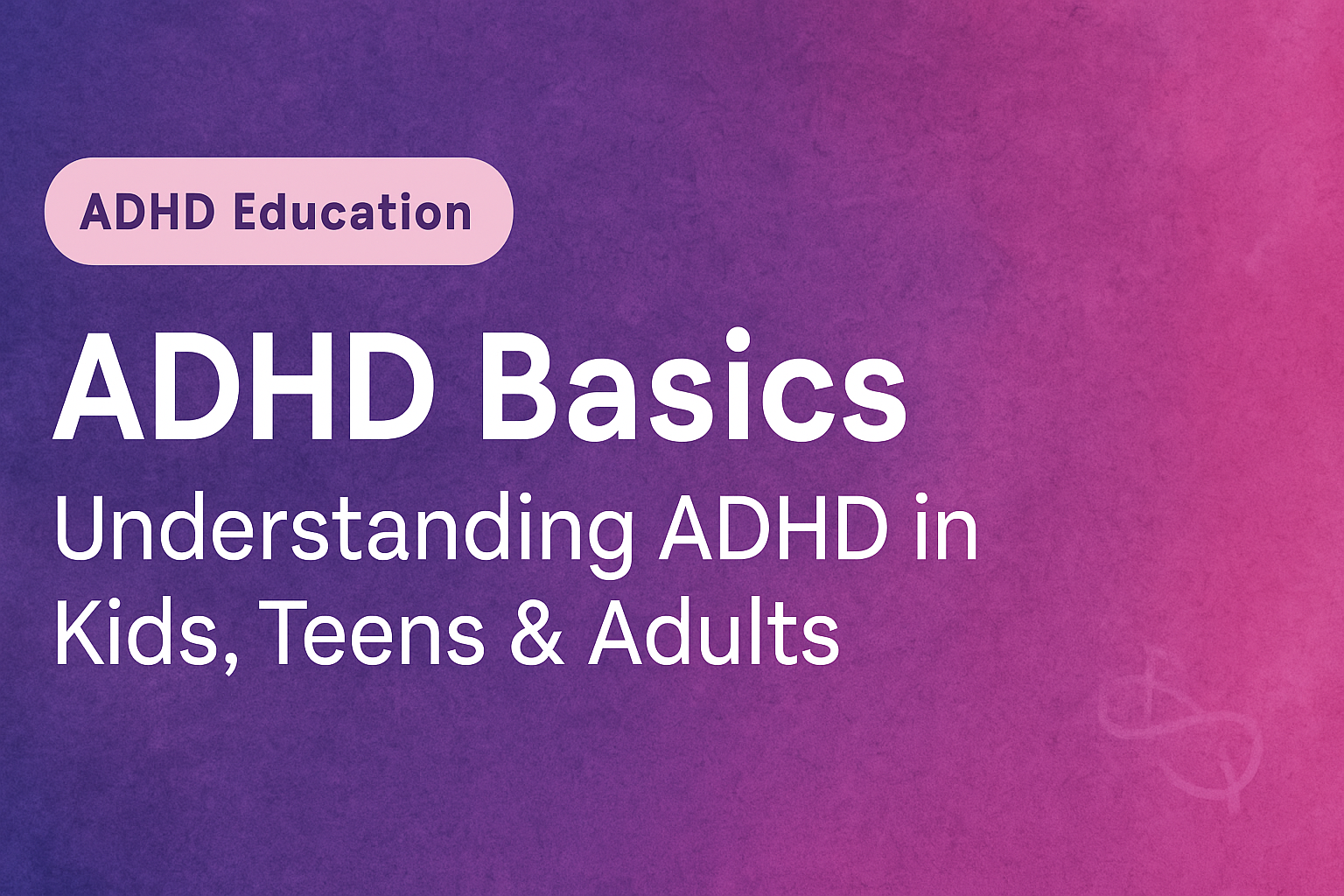
ADHD Basics
Understanding ADHD in Kids, Teens & Adults
Clear, respectful explanations of traits, challenges, and strengths across ages — in a neurodivergent-friendly format.
Learn the basics
Quick overviews for each age group — what to look for, what helps, and how to support.
ADHD at a glance
ADHD (Attention-Deficit/Hyperactivity Disorder) is a neurodevelopmental difference that affects attention, executive functions (planning, working memory, impulse control), and often how a person regulates energy and focus. It looks different in kids, teens and adults — let’s explore.
Common signs & traits
- Big energy or restlessness; constant motion.
- Difficulty waiting turns; blurting out answers.
- Distracted unless deeply interested; loses items.
- Emotional intensity; difficulties with transitions.
What helps
- Visual schedules (first → then); short task bursts.
- Movement breaks; using energy, job roles.
- Positive reinforcement; specific instructions.
- Quiet corner options; headphones for auditory support.
Common signs & traits
- Time-blindness; delaying tasks until deadline looms.
- High executive load: planning, multi-step assignments.
- Hyperfocus on strong interest; low motivation on routine tasks.
- Emotional intensity; overwhelm after long school/social days.
What helps
- Block scheduling (25-minute study + 5-minute break).
- Checklists, alarms, phone reminders.
- Study buddy or body-double system.
- Link tasks to interests; give choice and relevance.
Common signs & traits
- Delay in starting; perfectionism leads to “freeze”.
- Working-memory gaps; misplaced items; missed emails.
- Interest-based focus; hyperfocus “time warp”.
- Strengths like ideation, crisis-mode problem-solving, creativity.
What helps
- Externalize: visible calendar blocks, to-do apps, bins.
- Two-minute start rule; template routines; automation.
- Body-double sessions with peer or coach.
- Environment design: reduce friction, prep the night before.
Language matters
Use supportive language like “supports”, “regulation”, “executive load”, and “interest-based attention”. Avoid labels like “lazy” or “disruptive”. Frame tools (timers, headphones, checklists) as access supports — not crutches.
